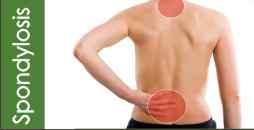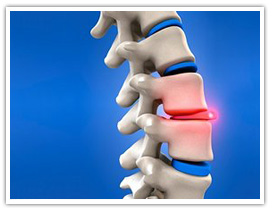
Slipped Disc Ayurvedic Treatment in Kolkata
Causes of Slipped DiscDisc herniations can occur from general wear and tear, such as jobs that require constant sitting, but especially jobs that require lifting. Traumatic (quick) injury to lumbar discs commonly occurs from lifting while bent at the waist, rather than lifting while using the legs with a straightened back. Symptoms of Slipped DiscSymptoms of a herniated disc can vary depending on the location of the herniation and the types of soft tissue that become involved. They can range from little or no pain if the disc is the only tissue injured, to severe and unrelenting neck or low back pain that will radiate into the regions served by affected nerve roots that are irritated or impinged by the herniated material. Other symptoms may include sensory changes such as numbness, tingling, muscular weakness, paralysis, paresthesia, and affection of reflexes. If the herniated disc is in the lumbar region the patient may also experience sciatica due to irritation of the sciatic nerve. Unlike a pulsating pain or pain that comes and goes, which can be caused by muscle spasm, pain from a herniated disc is usually continuous. The ayurvedic Treatment for Slipped Disc at Ayusya Clinic can be divided into following stages.1. Setting the bone alignment. The herniated disc can be restored into its orginal position. Ayusya clinic has its own traditional Ayurvedic techniques for setting the bone alignment.2. Healing procedure for the restored disc. 3. Strengthening the affected area both the disc and also wholistically causing complete rejuventation for the whole spine. 4. Meditation and Medication for two to three months while orally taking traditional Ayurvedic herbal medicines.  Cervial Spondylosis and Lumbar Spondylosis Cervial Spondylosis and Lumbar Spondylosis
Neck pain and lower back pain is one of the most common problems that one encounters in day to day life. It is a wear and tear of the vertebrae and discs .It is a condition of degeneration of the inter-vertebral disks, which advances with advancing age and in course of time, also involves the adjacent structures. It also leads to inflammatory changes which in turn brings about calcification (deposition of calcium) leading to extra bone formations called osteophytes Ayurvedic Treatment for Cervial Spondylosis and Lumbar Spondylosis.Ayurveda understands the function of body with basic three humors(doshas) i.e Vata, Pitta and Kahpa. The function of Vata is movements, Pitta is metabolism and change where as Kapha is binding, growth and stability.For a body to function in its optimum state these three doshas must function in equilibrium. At dis-equilibrium they cause disorders at there site. When the function of these three doshas are hampered at Cervical (Neck) region it is called as Manyagat Vata and when at lower back it is called as Katigat vata. Ayurvedic approch for treatment for Cervial Spondylosis and Lumbar Spondylosis is to maintain Vata, Pitta and Kapha at eqilibrium. The doctors of Ayusya clinic have given the patients most satisfactory results by applying best medicines which have manufactured from very strong medicinal valued herbs and treated patients following measures for best results.
|
Contact us!
We are happy to help you..
Book Appointment
- Ultadanga Book appointment
- Gariahat Book appointment
- Howrah Book appointment

Subscribe to our Newsletter
Book Appointment
-
Ultadanga
 (0)9831775590
Book appointment
(0)9831775590
Book appointment
-
Gariahat
 (0)9831775590
Book appointment
(0)9831775590
Book appointment
-
Howrah
 (0)9831775590
Book appointment
(0)9831775590
Book appointment
Call
-
Ultadanga
 (0)9831775590
(0)9831775590
-
Gariahat
 (0)9831775590
(0)9831775590
-
Howrah
 (0)9831775590
(0)9831775590



 A spinal disc herniation (prolapsus disci intervertebralis), incorrectly called a "slipped disc", is a medical condition affecting the spine, in which a tear in the outer, fibrous ring (annulus fibrosus) of an intervertebral disc (discus intervertebralis) allows the soft, central portion (nucleus pulposus) to bulge out.
A spinal disc herniation (prolapsus disci intervertebralis), incorrectly called a "slipped disc", is a medical condition affecting the spine, in which a tear in the outer, fibrous ring (annulus fibrosus) of an intervertebral disc (discus intervertebralis) allows the soft, central portion (nucleus pulposus) to bulge out.